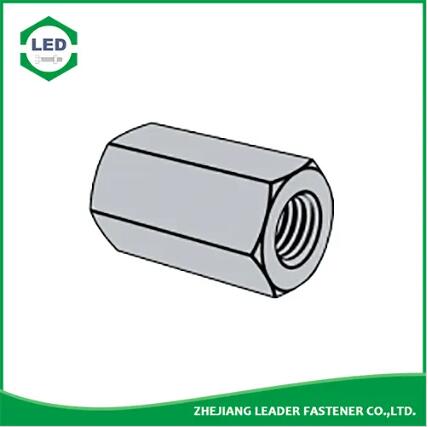Are there any common variations of rod coupling nuts that are allowed while still conforming to this standard?
2023-10-17
ANSI B18.2.2 provides specifications for rod coupling nuts, but it also allows for variations or modifications within certain limits while still conforming to the standard. These variations are typically acceptable as long as they do not deviate significantly from the standard's essential requirements and do not compromise the functionality, performance, or safety of the rod coupling nut. Some common variations or modifications that may be allowed while conforming to ANSI B18.2.2 include:
1. Special Threads: In some cases, applications may require rod coupling nuts with non-standard or custom threads. ANSI B18.2.2 allows for the use of special threads as long as they meet the application's specific requirements and are within acceptable tolerances.
2. Non-standard Materials: While the standard specifies common materials such as carbon steel, stainless steel, and alloy steel, it may permit the use of non-standard materials when there is a valid need, provided that the materials meet certain mechanical and chemical requirements.
3. Special Coatings or Finishes: ANSI B18.2.2 specifies various finishes for rod coupling nuts, but certain applications may require unique coatings or finishes for specific environmental conditions, such as corrosion resistance. As long as the coatings do not compromise the performance of the nut, they may be allowed.
4. Special Markings: In some cases, applications may require additional markings or identification on the rod coupling nuts to meet specific regulatory or traceability requirements. ANSI B18.2.2 typically allows for the inclusion of such markings, provided they do not obscure or conflict with required markings.
5. Thread Locking Features: Some applications, particularly those subject to vibration, may benefit from the addition of thread-locking features, such as adhesive patches or nylon inserts. These features can help prevent the nut from loosening and are often allowed as long as they do not affect the nut's compatibility with threaded rods.
6. Special Lengths: While ANSI B18.2.2 specifies general dimensions for rod coupling nuts, there may be instances where longer or shorter lengths are required for a specific application. These variations are typically allowed as long as they do not compromise the nut's performance.
7. Special Grades: While the standard defines specific grades (e.g., Grade A, Grade B, Grade C), certain applications may require customized or higher-grade materials. As long as the mechanical properties meet the application's requirements, these variations may be permissible.
It's important to note that any variations or modifications made to rod coupling nuts should be carefully considered, documented, and tested, if necessary, to ensure that they meet the intended application's requirements and maintain safety and performance standards. When making modifications, it is advisable to consult with engineers, manufacturers, or experts in fastener design to ensure that the modified nuts remain safe and effective in their intended use.



